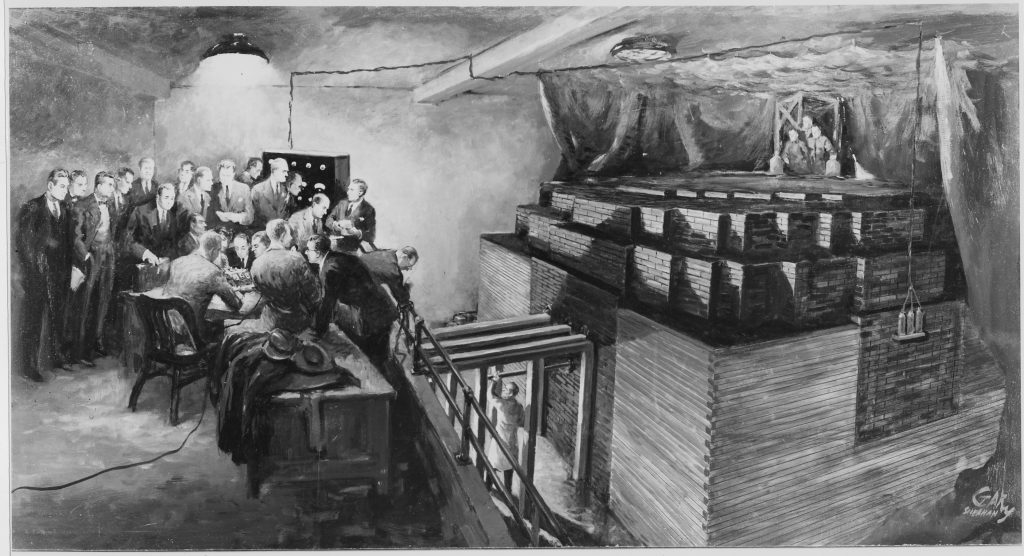George Weil (1907-1995) was an American physicist.
Weil was born in 1907 in New York City. He graduated from Harvard College in 1929 and then went on to earn a master’s and Ph.D. at Columbia University, where he published his dissertation, Beta-ray spectra of arsenic, rubidium and krypton, in 1942. It was at Columbia that Weil first met Nobel Prize winning physicist Enrico Fermi, and became part of his team of scientists.
In 1942, Weil went to the University of Chicago to work with Fermi at the Chicago “Met Lab.” On December 2, 1942, Weil was the last scientist on the floor for the first self-sustaining nuclear reaction in history, Chicago Pile-1, and started the reaction himself by pulling the final 14 foot cadmium “control rod” from the reactor.
Weil later recalled, “I couldn’t see the instruments. I had to watch Fermi every second, waiting for his orders. His face was motionless. His eyes darted from one dial to another. His expression was so calm it was hard. But suddenly his whole face broke into a smile.” A few minutes later, Fermi announced, “The reaction is self-sustaining.”
Weil’s work during the reaction went beyond simple technical instructions, as the dangers and responsibility were enormous. As Weil remembered, “I think we were all scared witless.”
Following his work in Chicago, Weil transferred to Hanford Site. In 1945, he was assigned to Los Alamos and was present for the Trinity Test on July 16. In October of 1945, he was assigned by General Groves as a representative to the joint British-Canadian atomic energy project in Ontario.
From 1947-1952, Weil worked for the newly created Atomic Energy Commission, first as the chief of the reactor branch, Division of Research, and then later as assistant director of the Reactor Development division. He was a technical director of the 1955 United Nations conference in Geneva on the peaceful uses of atomic energy. For this, he received a citation commemorating his role: “His careful planning, foresight, and administrative ability contributed substantially to the success of the Geneva Conference which will be recorded as an outstanding event in the promotion of the peaceful and beneficial uses of atomic energy through the world.”
In 1952, Weil left the AEC to work in Washington, D.C. as a consultant for the government, private agencies, and non-profit organizations. It was during this time that he became an outspoken critic of the dangers of nuclear energy. In 1971, Weil published a book, Nuclear Energy: Promises, Promises which gave a history of atomic production but was also highly critical of the flaws and problems behind it. He remarked, “today’s nuclear power plant projects are too many, too large, too soon, too inefficient; in short, they offer too little in exchange for too many risks.” He later noted, “I just feel we don’t need nuclear now. Or, I should add, nuclear at its price. And the price is Three Mile Island, or worse. It is an unforgiving technology. You make a mistake and you’ve had it.”
Weil was profiled in a 1972 New Scientist article “George Weil- from activator to activist.” He died on July 1, 1995 in Washington, D.C.





